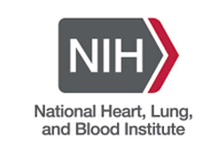New grant from NHLBI
jueves, agosto 11, 2016
|
The Mueller Lab for Gene Therapy is thrilled to announce that the National Heart, Lung, and Blood Institute (NHLBI) awarded us and 4 other labs at the UMass Chan Medical School a 5-year, $11 million program project grant!

This grant will fund new approaches to gene therapy for alpha-one antitrypsin deficiency. Our lab receives funding for two projects: "Animal Models Core" ($305,929/year) and "Third Generation Liver-Directed Dual-Function AAT Vectors" ($506,928/year) for a total of five years. You can read the abstract of the two projects below.
"Animal Models Core" Alpha-1 antitrypsin (AAT) is the second most abundant serum protein with circulating levels of 570-1500 mcg/ml. It is a multi-functional anti-protease and anti-inflammatory protein whose prototypic function is to neutralize neutrophil elastase, protecting the interstitial elastin in the lung parenchyma from degradation. This was first described as a genetic syndrome of emphysema associated with the deficiency of AAT five decades ago. The glu342lys (PiZ) mutation of AAT is remarkably common in Northern Europe, with a carrier frequency in several of those nations exceeding 5%. In North America the carrier frequency is approximately 4%, making AAT deficiency among the most common genetic disorders. In the homozygous state (PiZZ), AAT deficiency is also associated with a liver disease that appears to be due to retention of Z-AAT polymers and aggregates within hepatocytes, which are the cells responsible for the production of the bulk of AAT in the serum. Animal models play an important role in the understanding of the pathogenesis of chronic obstructive pulmonary disease (COPD) and alpha-1 antitrypsin deficiency (AATD). The latter being served by the PIZ mouse that accumulates AAT globules in the liver and goes on to develop liver disease. There are many abundant examples in the literature of transgenic mice that have contributed to the understanding of COPD, but none so far has been able to model lung disease as a consequence of AATD. Previous gene-targeting studies aimed at the serpina1 gene and its isoforms in mice have failed. This failure is mainly due to the complexity of the locus, in which a gene amplification event in mice results in 6 highly conserved isoforms of the gene, of which, depending on the stain, 3 to 5 copies are expressed. To the best of our knowledge our laboratory has created the first complete mouse knockout of alpha-1 antitrypsin. The core will make these mice available to the various projects of this grant along with an un-paralleled variety of other mouse models of which 3 are unique to this core. The core will also be phenotyping and creating new mouse lines. This will be accomplished in the following three aims. Aim 1 will characterize the biochemical and physiological phenotype of the AAT knockout mice and their utility to predict gene augmentation efficacy. Aim 2 will focus on generating a more physiologically relevant mouse models for testing genome editing of Z-AAT alleles as well as an AAT KO mouse in which to investigate immune responses to rAAV-AAT augmentation vectors. Finally, aim 3 will optimize the PiZ-NSG mouse for human liver xeno-engraftment.
"Third Generation Liver-Directed Dual-Function AAT Vectors" Alpha-1 antitrypsin (AAT) is the major circulating serum antiprotease, with normal plasma levels ranging from 11 to 30 microMolar. Approximately 4% of the North American and Northern European populations possess at least one copy of a mutant allele, known as Pi*Z, which results from a single amino acid substitution of Lys for Glu at position 342. In the homozygous state (Pi*ZZ), this mutation leads to severe deficiency of AAT and can result in liver disease which is due to a toxic gain-of-function of the Z-AAT mutant protein. Accumulation of Z- AAT polymers within hepatocytes consistently results in a state of serum AAT deficiency due to inefficient secretion. Two hundred thousand is a conservative estimate of the number of ZZ patients in the western world; however, there is currently no cure for the lung or liver disease. Protein replacement is given by intravenous infusion, with the approved dosing regimen being weekly infusions, and the only alternative dosing with proven equivalence being every-other-week infusions. Thus, gene augmentation with normal (PiM) AAT delivered via recombinant adeno- associated viral (rAAV) vectors has been developed as a potential alternative for “sustained release” of the therapeutic protein. We believe that in order to safely augment AAT from Z-AAT patient livers it may be necessary to silence the endogenous Z-AAT to prevent overwhelming the already stressed hepatocyte. Preliminary data in PiZ transgenic mice suggest that expressing rAAV-derived AAT without first silencing the endogenous Z-AAT can be hepatotoxic. Thus, this project aims to clinically translate a therapeutic strategy that combines traditional gene therapy with RNAi therapeutics in a single rAAV vector approach. We have termed these as dual-function rAAV vectors, and we have engineered them as a “liver- sparing” approach to target the burdened livers of PiZ AATD patients. Proof-of-concept studies in PiZ mice, confirmed that the dual function vector reduced misfolded AAT and concomitantly augmented serum levels of the normal protein. We hypothesize that endogenous Z-AAT silencing and M-AAT augmentation is feasible and a safe therapeutic approach for treating alpha-1 antitrypsin deficiency. We will test this hypothesis with the following three aims. In aim 1 we will optimize the dual function expression cassette for maximum knockdown and augmentation efficiency. These vectors will then be modified with non- human primate sequences (NHP) for aim 2, where we will assess efficacy of the dual function vector in non- human primates. In aim 3 we will perform a formal GLP pharm/tox and biodistribution study with the clinical version of the vector to prepare for an investigational new drug application with the FDA. Finally aim 4 will investigate the safety of peripheral intravenous delivery of these vectors in patients with alpha-1 antitrypsin deficiency.